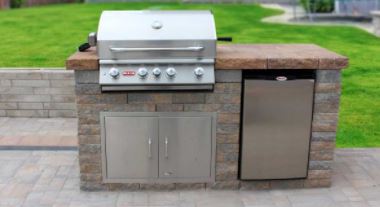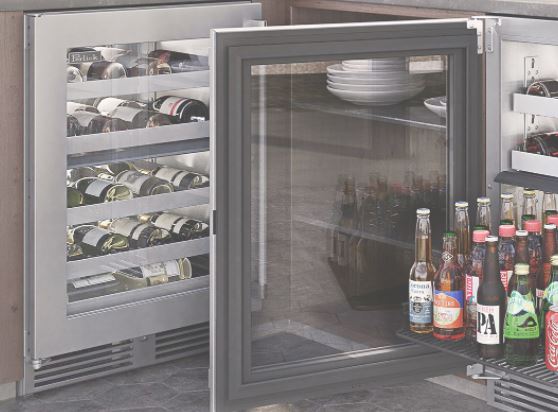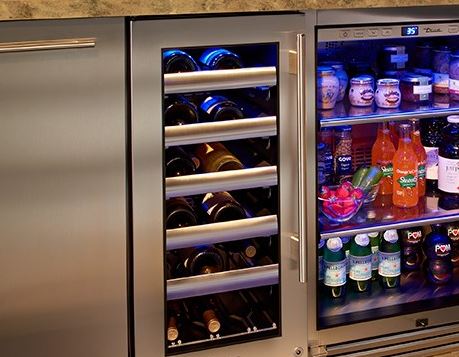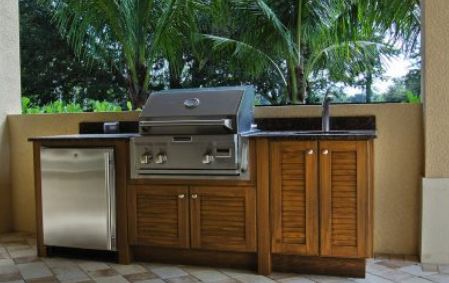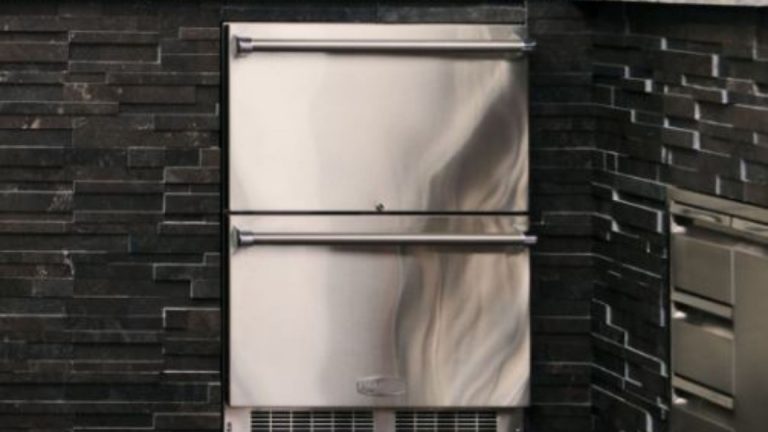What are Standard Outdoor Refrigerator Dimensions
Size Matters When it Comes to Outdoor Refrigerator Dimensions
When building an outdoor kitchen and selecting an outdoor refrigerator, size is one of the most important considerations you will have to deal with.
Unlike indoor kitchens where you have to decide between upper and bottom freezers, wall ovens or freestanding ovens, and fridges with an ice maker or water dispenser, outdoor fridges seem fairly standardized. Or are they?
As you will see below, standard sizes are merely used to catagorize and compare models of outdoor refrigerators. They are not actually standard sized at all.
Sizes
Standard refrigerator dimensions for outdoor fridge units are quoted as 34 inches tall, 24 inches deep, and 24 inches wide. Most outdoor kitchens include standard-sized refrigerators, which offer adequate space to store drinks and BBQ supplies. Compact refrigerators units are smaller, with capacities ranging from 2.7 to 3.5 cubic feet.
Standard outdoor refrigeration units can be as much as 10.9 cubic feet in size.
Compact units are usually narrower than standard units. They’re the same height and depth as regular versions, but they’re 30 percent to 50 percent narrower in width. Compact units are ideal for keeping a few drinks and snacks for the evening’s festivities, and you’ll most likely need to replenish the fridge at some time, especially if you have visitors.
Every manufacturer that produces an outdoor refrigerator product keeps within a certain inch range of standard refrigerator sizes. Common size refrigerators widths are 15″, 20″, 24″, 30″ and 45″.
However, as you can see from the chart below, what is labeled a 24″ refrigerator will vary in size from manufacturer to manufacturer. The interior size, or storage capacity in cubic feet, can also be different from brand to brand and model to model.
| Brand | Width | Height | Depth | Cu Ft | Type |
| Uline | 15.25″ | 34.125″ | 22.25″ | 3.1 | Built-in or Freestanding |
| Danby | 20.75″ | 33.062″ | 21.312″ | 4.4 | Freestanding |
| Avallon | 23.81″ | 34.125″ | 23.625″ | 5.66 | Built-in |
| Summit | 23.63″ | 34.00″ | 23.50″ | 4.6 | Freestanding |
| Alfresco | 44.6875″ | 24.1875″ | 26.9375″ | 7.2 | Built-in |
Cutout Width vs. Actual Width
A cutout width is the width of the empty space where an appliance will be placed during the building phase of an outdoor kitchen. Appliances should be slightly smaller so they fit in the cutout. This space is referred to as the cutout width.
The actual width of the appliance is measured in inches. This width is different from manufacturer to manufacturer. Knowing the exact width of the outdoor refrigerator you are purchasing will enable you to measure for your refrigerator and allow for enough empty space on all sides of the refrigerator for circulation and access per the manufacturers’ installation recommendations.
What is the Cutout Height on an Outdoor Refrigerator?
The cutout height is very important for outdoor refrigerators that are built-in or undercounter. The outdoor refrigerator needs to fit under the counter with enough room to slide it in the opening that has been prepared for the appliance. The manufacturer will have a recommended cutout height (the inches in height of the opening that will accept the refrigerator) which is the distance, in inches, from the floor to the underside of the counter.
On most outdoor undercounter refrigerators, however, the units will have adjustable legs. Each of the four refrigerator legs can be raised or lowered to level the refrigerator from front to back and from side to side. This is important for proper functioning of the refrigeration unit. Especially outdoors where the surface on which the refrigerator is to sit may be sloped for drainage, this adjustability is much needed.
Most of the time, the cutout height will be greater than the actual, or assembled, height of the outdoor refrigerator. If you are replacing your outdoor refrigerator or changed your mind on models after the rough opening was framed, you may not have an issue with the cutout height being too short. The adjustable legs may allow for enough of a change in height of the unit so that you can make it fit in the space.
Remember that built in units have the ventilation panels in the lower front of the outdoor refrigerator. If you buy a free standing unit and want to build it into your outdoor kitchen cabinets, you will have to leave much more space on all sides of the refrigerator box for ventilation. Check with the manufacturer for the exact recommendations for your unit.
Why is the recommended cutout inches in depth on an outdoor refrigerator smaller than the actual depth of the refrigerator?
The assembled depth of an outdoor refrigerator includes the box, the door, and the door handles. In order for the door on an outdoor refrigerator to open properly, it must extend beyond the frame of the cabinet box. This is also true for french door outdoor refrigerators. Otherwise, the door won’t open completely.
This means the door hinges should align with the cabinet frame, not the outside of the door. Consequently, the cutout depth will be smaller than the actual depth of the refrigerator.
Outdoor refrigerator doors, including beverage refrigerators, are quite thick. They have heavy duty door seals and insulation which add inches in depth. They need room to swing open fully.
Although you have probably seen undercounter refrigerators which are inset completely flush with the cabinet box fronts (called counterdepth refrigerators) the builder usually leaves a gap of a few inches on either side of the fridge so the fridge door can swing freely. However, this detracts from the built-in look many homeowners are after for their outdoor kitchens.
More information about choosing the right sized outdoor refrigerator can be found in our guide to buying an outdoor refrigerator. Link here.

